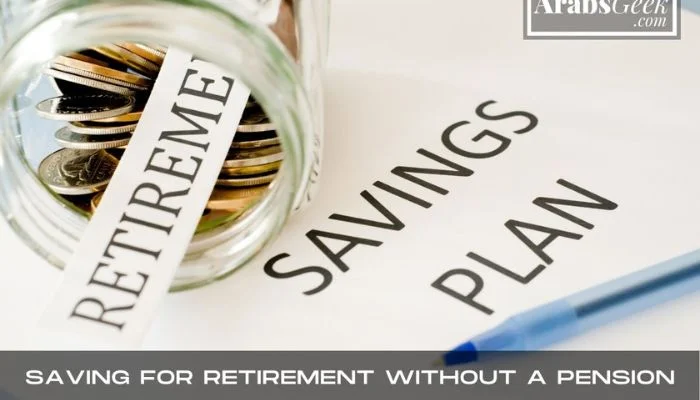Introduction | Saving For Retirement Without A Pension
In today’s ever-changing financial landscape, relying on a pension to fund your retirement may not be feasible. For many individuals, the responsibility of securing a comfortable retirement falls squarely on their shoulders. This article will guide you through understanding your retirement income needs, why pensions are less common today, alternative retirement savings vehicles, and strategies for creating a personalized retirement savings plan. By following these steps, you can confidently prepare for a financially secure retirement, even without a pension.
Table of Contents
Understanding Retirement Income Needs
Assessing your lifestyle goals
Before you start saving for retirement, consider your lifestyle goals during your golden years. Do you envision traveling the world, purchasing a vacation home, or spending time with your loved ones? Understanding your desired lifestyle will help you estimate the amount of income you’ll need to achieve those goals in retirement.
For any business enquiry, you can contact us at ArabsGeek.com
For more of such financial articles, Consider visiting our sister website at EntrepreneursPilot.com
Estimating expenses | Saving For Retirement Without A Pension
Once you have a clear vision of your retirement goals, estimate your expenses. Consider factors such as housing, healthcare, food, and leisure activities. Be sure to account for inflation and the potential need for long-term care. This information will help you determine the amount of retirement income you’ll need to support your desired lifestyle.
Why Pensions Are Less Common Today
Shift to defined contribution plans
Over the past few decades, there has been a shift from defined benefit plans, such as pensions, to defined contribution plans, like 401(k)s and 403(b)s. This change is due to various factors, including the rising cost of providing pension benefits and increased life expectancies. As a result, fewer employers are offering traditional pension plans, making it more critical for individuals to take charge of their retirement savings.
Gig economy and self-employment | Saving For Retirement Without A Pension
The rise of the gig economy and self-employment has also contributed to the decline in pension availability. Freelancers, contractors, and small business owners typically don’t have access to employer-sponsored pension plans, making it necessary for them to explore alternative retirement savings options.
Alternative Retirement Savings Vehicles
401(k) and 403(b) plans
For individuals without access to a pension, 401(k) and 403(b) plans are popular retirement savings options. These employer-sponsored plans allow you to contribute a portion of your pre-tax income to a retirement account, which can then be invested in a variety of assets. Many employers also offer matching contributions, increasing your overall retirement savings.
Individual Retirement Accounts (IRAs) | Saving For Retirement Without A Pension
IRAs, including Traditional and Roth IRAs, are another valuable savings vehicle for individuals without pensions. Traditional IRAs offer tax-deferred growth and potential tax-deductible contributions, while Roth IRAs provide tax-free growth and tax-free withdrawals in retirement. Both options have annual contribution limits and can be an excellent supplement to your retirement savings strategy.
Health Savings Accounts (HSAs)
HSAs are tax-advantaged savings accounts designed to help individuals with high-deductible health plans cover their medical expenses. However, HSAs can also serve as a supplemental retirement savings vehicle. After age 65, HSA funds can be withdrawn penalty-free for non-medical expenses, making them a versatile addition to your retirement savings portfolio.
Taxable investment accounts | Saving For Retirement Without A Pension
Taxable investment accounts, such as brokerage accounts, offer more flexibility than tax-advantaged retirement accounts. While these accounts don’t provide the same tax benefits as IRAs or 401(k)s, they can be an excellent option for additional retirement savings or for individuals who have maxed out their annual contributions to tax-advantaged accounts.
Real estate investments
Investing in real estate can also help you save for retirement without a pension. Rental properties, for example, can provide a steady stream of income during your retirement years. Real estate investments can also appreciate in value over time, potentially offering significant returns when sold.
Creating a Personalized Retirement Savings Plan
Assess your current financial situation
Before developing a retirement savings plan, take stock of your current financial situation. Determine your income, expenses, existing debt, and any short-term financial goals. This information will help you create a realistic retirement savings strategy that aligns with your unique circumstances.
Determine your retirement goals | Saving For Retirement Without A Pension
Establish clear, measurable, and achievable retirement goals. Consider factors like your desired retirement age, the lifestyle you hope to maintain, and potential healthcare expenses. Having well-defined goals will help you stay focused and motivated throughout your savings journey.
Choose the right savings vehicles
Based on your financial situation and retirement goals, select the appropriate savings vehicles for your needs. This may include a mix of employer-sponsored retirement plans, IRAs, HSAs, taxable investment accounts, and real estate investments. Diversify your savings to spread risk and increase the potential for higher returns.
Develop a diversified investment strategy | Saving For Retirement Without A Pension
Creating a diversified investment strategy is essential for managing risk and achieving your retirement goals. Invest in a mix of stocks, bonds, and other assets to spread risk and potentially increase returns. Regularly review and adjust your investment strategy to ensure it remains aligned with your goals and risk tolerance.
Strategies for Maximizing Retirement Savings
Starting early
The earlier you start saving for retirement, the more time your investments have to grow and compound. Even modest contributions made consistently over time can add up to significant savings, thanks to the power of compound interest.
Automating savings | Saving For Retirement Without A Pension
Automating your retirement savings can help you stay on track and avoid the temptation to spend the money elsewhere. Set up automatic contributions to your retirement accounts, such as a 401(k) or IRA, to ensure that you’re consistently saving for your future.
Catch-up contributions
For individuals aged 50 and older, catch-up contributions are an excellent way to boost retirement savings. These additional contributions, allowed in tax-advantaged retirement accounts like 401(k)s and IRAs, can help you make up for lost time and increase your overall retirement savings.
Reducing fees and expenses | Saving For Retirement Without A Pension
Minimizing fees and expenses associated with your investments can significantly impact your overall retirement savings. Look for low-cost investment options, such as index funds and exchange-traded funds (ETFs), and consider working with a fee-only financial advisor to help manage your portfolio.
Staying on Track with Your Retirement Plan
Regularly review and adjust your plan | Saving For Retirement Without A Pension
Your retirement savings plan should be a living document that evolves as your financial situation and goals change. Regularly review your plan to ensure it remains aligned with your objectives and adjust as necessary. This may include increasing your savings rate, rebalancing your investment portfolio, or revisiting your retirement goals.
Stay informed about changes to retirement policies
Staying informed about changes to retirement policies and tax laws can help you make the most of your retirement savings efforts. For example, understanding the implications of changes to Social Security benefits, tax regulations, or contribution limits can help you adjust your strategy to maximize your retirement savings.
Conclusion | Saving For Retirement Without A Pension
Saving for retirement without a pension can seem daunting, but with the right strategies and tools, it’s entirely achievable. By understanding your retirement income needs, exploring alternative savings vehicles, and developing a personalized retirement savings plan, you can confidently prepare for a comfortable and financially secure retirement. Remember to start early, automate your savings, take advantage of catch-up contributions, and reduce fees to maximize your retirement savings potential.
Frequently Asked Questions (FAQs)
Q1: Can I save for retirement without a pension?
Yes, there are many alternative retirement savings vehicles, such as 401(k) plans, IRAs, HSAs, taxable investment accounts, and real estate investments, that can help you save for retirement without a pension.
Q2: What is the best way to save for retirement without a pension?
The best way to save for retirement without a pension will depend on your unique financial situation and goals. Generally, a combination of tax-advantaged retirement accounts, such as 401(k)s and IRAs, along with other investments like taxable accounts and real estate, can provide a well-rounded retirement savings strategy.
Q3: How much should I save for retirement if I don’t have a pension?
The amount you should save for retirement without a pension will depend on your lifestyle goals, anticipated expenses, and current financial situation. A common recommendation is to save at least 10% to 15% of your income for retirement, but this can vary based on individual circumstances.
Q4: Can I rely on Social Security for my retirement income?
While Social Security can provide some income during retirement, it’s essential not to rely on it as your sole source of income. Social Security is intended to supplement your retirement savings, not replace them, so it’s crucial to build your nest egg through various retirement accounts and savings vehicles.
Q5: What if I started saving for retirement late?
Starting late doesn’t mean all hope is lost. You can still take steps to improve your retirement savings. Consider catch-up contributions for those aged 50 and older, increase your savings rate, delay your retirement age, and reduce your investment fees and expenses. Working with a financial advisor can help you develop a strategy to make the most of your remaining working years and maximize your retirement savings.
Remember that every little bit helps, so don’t let the feeling of being behind discourage you from taking action. The important thing is to start saving as soon as possible and stay consistent in your efforts.











